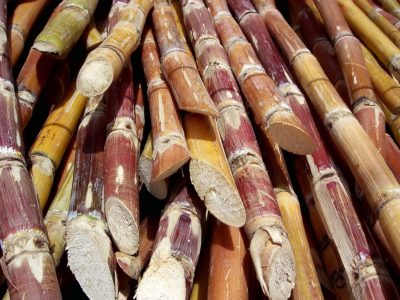Just How Cane Sugar Processing Chemicals Improve Sugar Top Quality and Return
The duty of processing chemicals in walking stick sugar production is pivotal, as they directly influence both the top quality and yield of the last item. By employing materials such as lime and phosphoric acid, manufacturers can properly eliminate pollutants and boost removal performance. The incorporation of activated carbon and enzymes serves to optimize the breakdown of complicated sugars, eventually leading to a purer and higher-quality sugar. The intricacies of how these chemicals connect within the processing environment raise inquiries concerning their long-lasting ramifications and prospective improvements in the industry.
Review of Walking Stick Sugar Processing
Walking stick sugar processing includes a series of essential steps that change raw sugarcane into polished sugar products. The procedure starts with harvesting, where mature sugarcane stalks are reduced and carried to processing facilities. Upon arrival, the walking cane undergoes cleaning to remove pollutants such as dirt and plant materials.
Adhering to washing, the walking stick is squashed to extract the juice, which consists of sucrose - sugar and cane. This juice undergoes information, where lime and warmth are used to eliminate continuing to be pollutants and non-sugar components. The cleared up juice is after that evaporated to concentrate the sugar web content, leading to the formation of thick syrup
Next, the syrup is taken shape via a regulated cooling procedure, resulting in sugar crystals. To accomplish polished sugar, additional purification steps are applied, consisting of cleaning, re-crystallization, and drying.
The end product is either packaged as raw sugar or better processed right into white sugar, accommodating various consumer and industrial needs. This detailed collection of actions ensures the production of high-grade sugar, essential for numerous applications in food and beverage industries.
Key Handling Chemicals Used
The manufacturing of polished walking cane sugar depends on various handling chemicals that play considerable functions at different phases. This step is essential for improving the total top quality of the drawn out juice.
Phosphoric acid offers a double purpose; it boosts the information process and aids in the removal of color-forming substances, adding to a higher pureness of the final item. Furthermore, sulfur dioxide functions as a lightening agent, enabling the reliable removal of undesirable pigments and improving the shade of the sugar.
Various other notable chemicals consist of activated carbon, which is used for additional decolorization, and enzymes that promote the breakdown of intricate sugars into simpler types, thus enhancing return. The cautious option and application of these handling chemicals are crucial for enhancing the efficiency of sugar removal and refining procedures, ultimately causing a more constant and better sugar item.

Influence On Sugar High Quality
How do processing chemicals affect click for more info the high quality of polished sugar? The introduction of various chemicals in the walking cane sugar processing phase dramatically boosts the purity and general high quality of the end product. Key representatives, such as phosphoric acid and calcium hydroxide, facilitate the clarification process, properly removing impurities and colorants that can negatively impact sugar's appearance and preference. By neutralizing undesirable components, these chemicals assist accomplish a greater level of decolorization, causing an extra aesthetically appealing and marketable product.
Furthermore, making use of activated carbon and ion-exchange materials throughout the refining procedure plays a critical duty in removing off-flavors and unfavorable odors, adding to the sugar's sensory account. This refinement not only boosts the organoleptic and aesthetic qualities yet additionally enhances useful site the life span by decreasing microbial task connected with impurities.
Furthermore, the exact application of these chemicals guarantees that the sugar exhibits a regular grain dimension and flowability, which are vital characteristics for both industrial applications and consumer preferences. On the whole, the calculated use of processing chemicals is essential in accomplishing high-quality polished sugar that satisfies sector requirements and consumer assumptions.

Enhancing Return Effectiveness
Enhancing return performance in cane sugar processing entails maximizing various stages of production to maximize the amount of sugar drawn out from raw walking stick. One critical aspect is the selection and application of proper handling chemicals, which can promote the breakdown of cell walls and enhance sugar release during removal. Chemicals such as enzymes and acids play an important role in this process by hydrolyzing polysaccharides and dissolving pollutants, consequently enhancing the total removal performance.

Regular tracking and adjustment of processing criteria are necessary to maintain effectiveness throughout manufacturing (sugar and cane). By employing these approaches, sugar producers can not just increase the amount of sugar gotten however additionally decrease waste and reduced manufacturing costs, adding to a much more profitable and sustainable sugar handling operation
Advantages for Manufacturers and Consumers
Walking stick sugar processing chemicals provide considerable advantages for both customers and manufacturers, producing a much more effective and lasting industry. For producers, these chemicals boost removal procedures, leading to higher returns and boosted sugar high quality.
For customers, the benefits are just as compelling. The enhanced high quality of sugar translates to much better taste and uniformity in food. Furthermore, the use of handling chemicals can cause a much more stable supply of sugar, alleviating shortages and rate spikes that can take place because of ecological aspects or market changes. The innovations in production approaches contribute to sustainability campaigns by reducing source use and waste generation, appealing to eco mindful customers.
Final Thought

The role of handling chemicals in walking stick sugar manufacturing is crucial, as they directly influence both the top quality and yield of the final item (sugar and cane). The consolidation of activated carbon and enzymes offers to enhance the breakdown of intricate sugars, ultimately leading to a purer and higher-quality sugar.Walking cane sugar handling involves a collection of vital steps that change raw sugarcane right into refined sugar products.Enhancing return effectiveness in cane sugar handling involves maximizing various phases of production to optimize the amount of sugar removed from raw walking stick.Walking cane sugar processing chemicals play a crucial function in improving both sugar top quality and yield